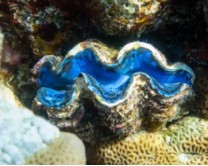
The heavy metal elements that pollute the sea are mainly lead, cadmium, arsenic, mercury, etc. They are enriched in different seafood and passed to humans through the food chain, causing harm to human health. Lead and cadmium are accumulative toxicants, and mollusks can enrich lead and cadmium in the water body in their bodies. Lead in crustaceans should not exceed 0.5 mg/kg, lead in bivalves should not exceed 1.5 mg/kg, cadmium in crustaceans should not exceed 0.5 mg/kg, cadmium in bivalves and other mollusks should not exceed 2.0 mg/kg. Mollusks contain many different forms of arsenic, of which inorganic arsenic is the most toxic. Most of the mercury is enriched in mollusks in organic form, and studies have shown that mollusks are 10 times more capable of enriching organic mercury than inorganic form.
Heavy metals are indispensable elements for the production and growth of aquatic organisms and humans, but they can be very toxic to living organisms when their levels exceed certain thresholds. When heavy metals enter the ecosystem, they are distributed among the various components of the ecosystem and impact each of them. Contaminated sediment not only directly affects the growth and reproduction of aquatic organisms and the whole community structure but also poses a potential threat to the whole water ecosystem and human health through the enrichment of toxic and harmful substances by aquatic organisms and then through the transmission of the food chain. Therefore, for pollutants, sediment has the dual role of source and sink, and there is a very close relationship between the change in water bodies' environmental quality and sediment's environmental quality. Sediment toxicity testing using benthic invertebrates can provide a direct basis for sediment quality evaluation, and the level of its content is also one of the very important indicators for evaluating the quality of the water environment and the surrounding ecological environment.
Mollusks samples to be tested were washed with deionized water until clean, and the soft tissues of the mollusks were removed with a stainless-steel knife and forceps. The soiled material was thoroughly washed with ultrapure water. These soft tissues were then freeze-dried. After the samples were cold-dried, these dried samples were mixed well to powder form using a pulverizer. The samples to be digested were taken, and a small amount of concentrated nitric acid or aqua regia was added, digested, filtered, and fixed with ultrapure water.
The content of silver (Ag), copper (Cu), arsenic (As), lead (Pb), cadmium (Cd), and mercury (Hg) in the digestion solution was analyzed by inductively coupled plasma mass spectrometry (ICP-MS), and the blank solution was also determined.
The specific tests include the following.
The evaluation model uses a single-factor evaluation method with the relationship Pi = Ci / Si, where Pi is the quality score index of i pollution factor, Ci is the detection data of i pollution factor, Si is the evaluation standard of i pollution factor, and when Pi ≥ 1, the pollution exceeds the standard.
If you are interested in our services, or if the service you want is not listed, please feel free to contact us, and we will get back to you as soon as possible.
For research or industrial raw materials, not for personal medical use!Lifeasible has established a one-stop service platform for plants. In addition to obtaining customized solutions for plant genetic engineering, customers can also conduct follow-up analysis and research on plants through our analysis platform. The analytical services we provide include but are not limited to the following:
Get Latest Lifeasible News and Updates Directly to Your Inbox
Adaptive Evolutionary Mechanism of Plants
February 28, 2025
Unraveling Cotton Development: Insights from Multi-Omics Studies
February 27, 2025